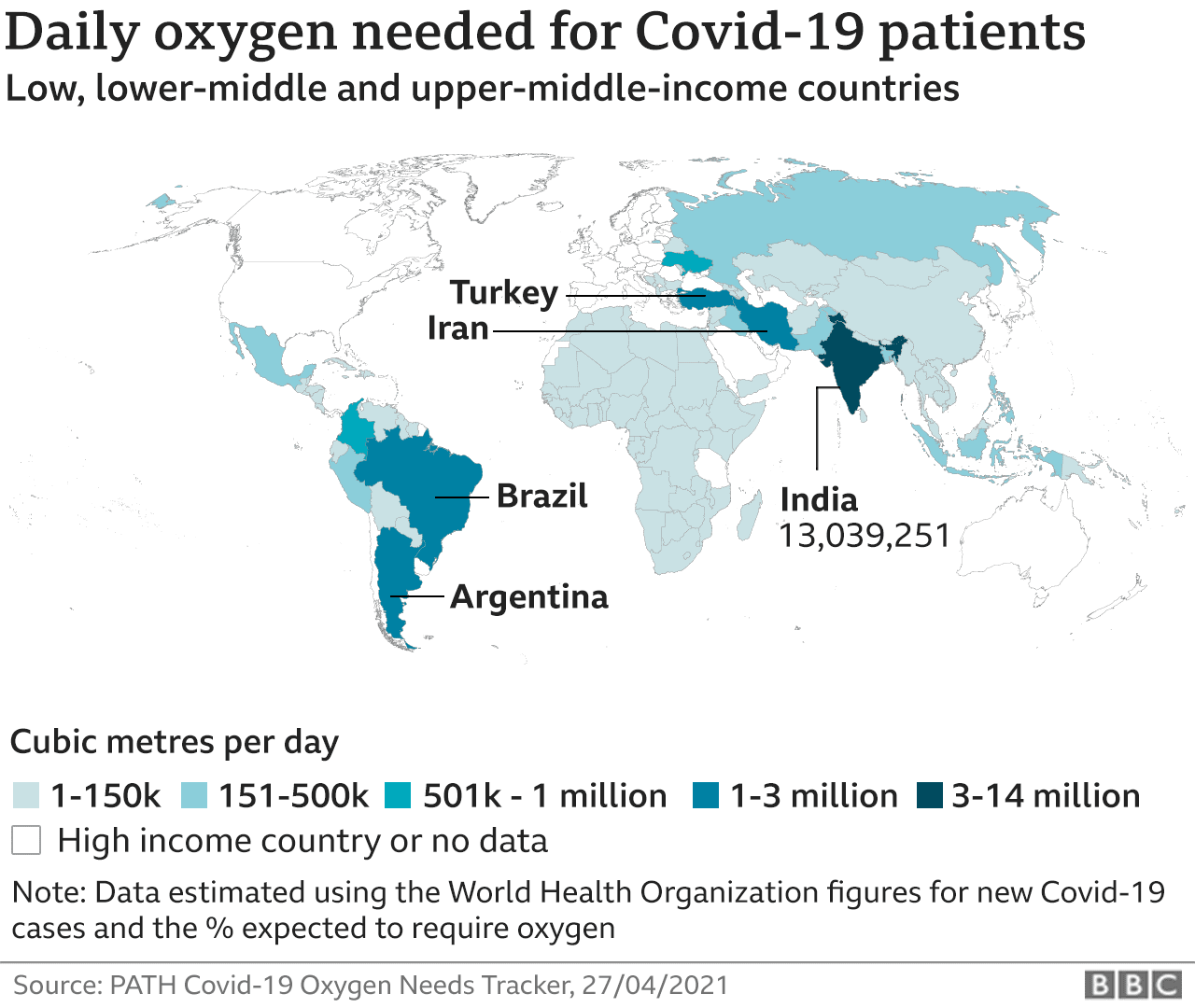The COVID-19 Crisis in India
There is no doubt that India’s ongoing news has been centered around the lethal and exponential resurgence of COVID-19. Over the past few months beginning from March to May, the surge to a peak of more than 400,000 new cases in May has been unprecedented. Consequently, the insufficient materials have led to a novel death toll that has taken the world by surprise as the worst outbreak in COVID-19 history. With an inability to socially distance, among other forces, India’s population has suffered from this second surge in an unimaginable way.
Hospitals in India are ill-equipped at the moment to handle the overwhelming number of cases and there is a major shortage of critical intensive care wards. As a result, families have turned away, been sent to further hospitals, or left to fend for themselves.
Furthermore, the lack of oxygen has resulted in about 13 million cubic meters needed per day. One of the most brutal effects of this second COVID-19 crisis is Indian citizens pleading for oxygen or any means of access to doctors and facilities but being denied based on limited supplies.

Additionally, as a result of the understaffed, poorly equipped, and lack of social distancing and masking practices, India’s death toll has been severely underreported. Despite the government stating that there are more than 300,000 cases, this staggering number is actually bigger than this. Crematoriums and cemeteries have become scarce and Hindu individuals who make up most of India’s population are hard-pressed for the quick cremation of their loved ones. Not to mention, the rituals for Hindu families for the last rites of the deceased are unable to be performed correctly.
This recent COVID-19 surge has not only impacted the daily lifestyle of the second most populated country, but it has also negatively affected the cultural and religious norms of the people. The COVID-19 wave has altered traditional customs and continues to challenge funeral practices.
In this time of desperation, India requires global aid in relieving the nation of this crisis. It is reported that the UK and European nations have begun to provide ventilators and oxygen while the US lets up on its ban of sending raw materials for India to have easier access to vaccines. With global concern and aid, the situation may soon alleviate; however, there are still more accessible ways to help as the situation worsens. Nonprofits such as Path, Care India, and Oxygen for India are a few ways to help, among others.
To keep up with COVID-19 cases it is necessary to understand its severity and variants in different regions of the world. Furthermore, regularly consulting the World Health Organization, as well as the CDC guidelines, are the most reliable ways to be kept up to date on the rapidly changing situation in India and locally.









